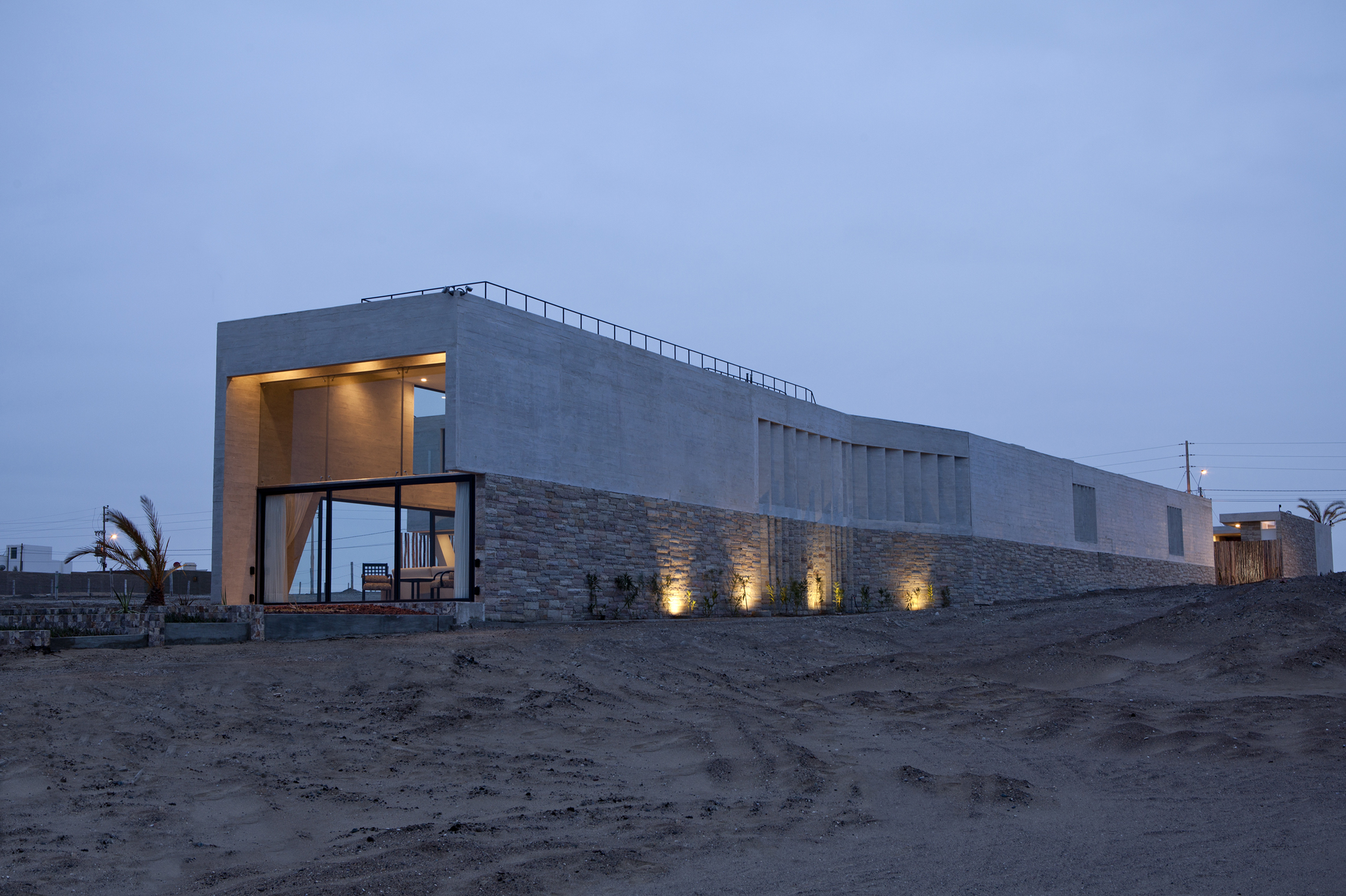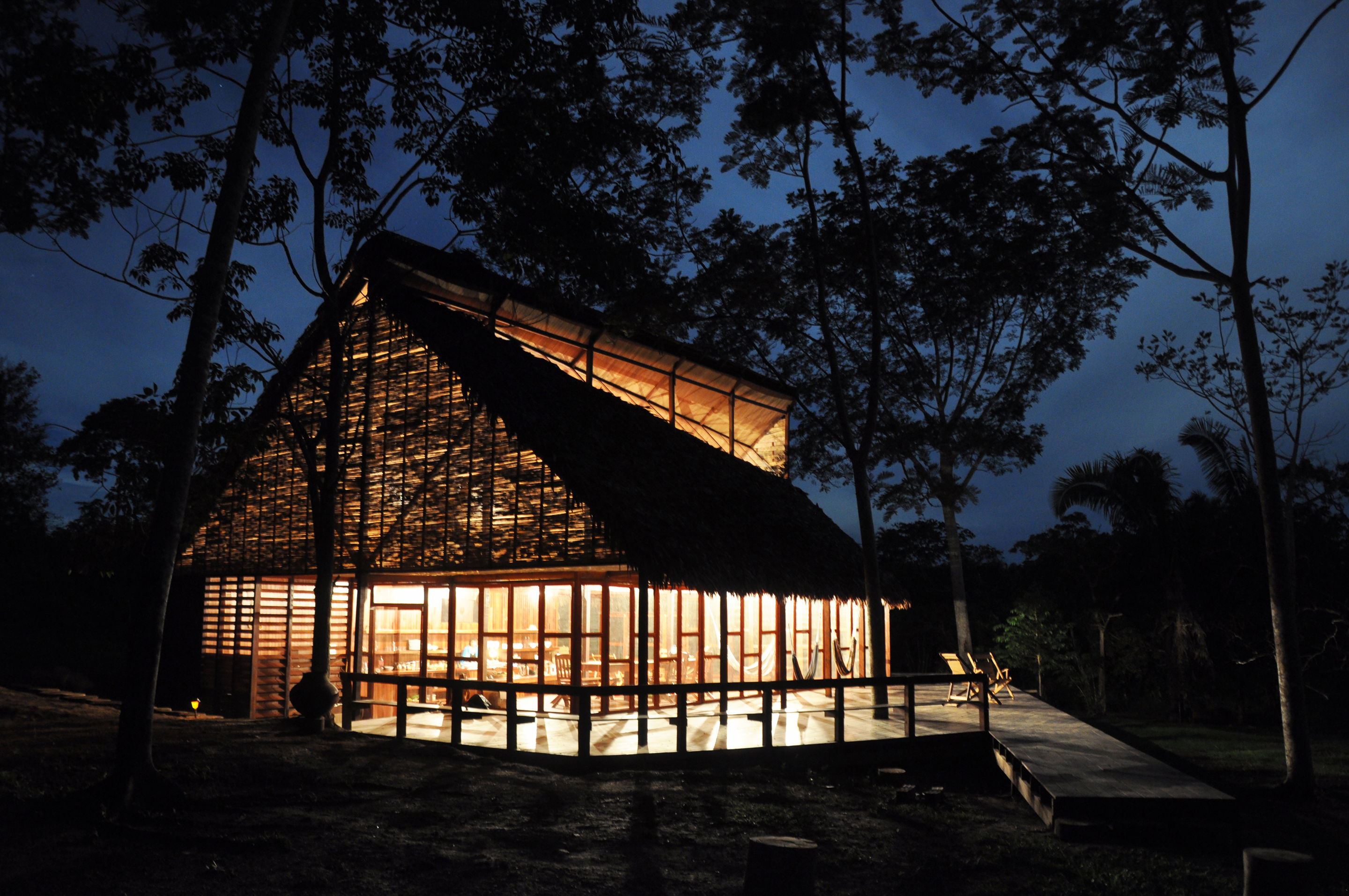Living Landscapes: New Architecture Across Peru

Architects: Showcase your work and find inspiration for your next project through Architizer, and enter the One Drawing Challenge for a chance to win $2,500!
Peru is defined by its landscapes. Located on the western coast of South America facing the Pacific Ocean, the country’s geographry follows the Andes mountains as they run parallel to the ocean. With the coastal plain to the west, the Andes highlands, and the Amazon rainforest to the east, these three regions shape the country’s architecture and design culture. In turn, modern building and structures are shaped by their larger context and become a reflection of the landscape.
Peru is described as a megadiverse region, and this has its roots in the country’s long history and development. Peruvian territory was home to several ancient cultures. From the oldest civilization in the Americas and one of the five cradles of civilization, to the Inca Empire, the country holds some of the longest histories of civilization in the world. Today, a mixture of cultural traditions has resulted in a wide diversity of architecture and spatial expressions. The following projects showcase a small handful of the new developments emerging across the country.

 House Casa Paracas by Riofrio Arquitectos, Paracas, Peru
House Casa Paracas by Riofrio Arquitectos, Paracas, Peru
Located on the desert coast of the Paracas Bay, the design of this house is a closed volume that extends along the total length of the plot. The main objective was to create a strong element of protection against the winds distinctive of this location. Through its path the volume expands, turns, and embraces a wide space in the open where all pathways are united around the swimming pool, terraces, and landscape. Protected by a huge exposed concrete mass, these spaces enjoy sunlight throughout the whole year. The building’s aesthetics come as a result of the special concern with its relation to the environment where it is located. Shapes, materials, and colors seek to interact with the textures and tones of the desert.

 Nursery School in Los Ángeles de Eden by Semillas, Pangoa, Peru
Nursery School in Los Ángeles de Eden by Semillas, Pangoa, Peru
This nursery school is located in Los Angeles of Eden, in the Selva Central region of Peru. The school consists of two classrooms, a small kitchen, and a covered multipurpose patio. On the south side of the lot a playground was built using recycled materials, such as used tires and rods left over from construction. Handmade clay bricks were used to construct the walls and the structure is made of reinforced concrete. There is one covered eave made from of wooden beams, a ceiling of crushed cane (made by children and parents). The construction of the school was carried out with master builders and the local citizens, while the playground and stairway of tires was completed by volunteers and neighbors during a workshop.

 Casa Ronda by Marina Vella Arquitecta, Peru
Casa Ronda by Marina Vella Arquitecta, Peru
The Ronda House is built on a rectangular lot that measures 12 meters wide and 22 meters deep on a site facing the Pacific Ocean. The landscape includes a lateral view of white sands and dunes and backed by a red hill, thus the name of the place: Cerro Colorado (Red Hill). The project encourages a continuous connection with its surroundings through an outdoor space with open partitions to the seafront, expanding the interiors while the lives of the occupants rotate around the central patio, marked by a large, semi-circular wall in red stone sourced from the nearby hill. Circulation areas, stairs and corridors to the bedrooms are organized around the semicircular stone wall. Skylights and small patios open to daylight and natural ventilation where bedrooms and surrounding areas infuse the home with the ambiance of a seaside holiday retreat.

 Veronica Beach House by Longhi Architects, Lima, Peru
Veronica Beach House by Longhi Architects, Lima, Peru
Veronica House was designed as an opportunity to explore the relationship between Peruvian architecture and international styles. The intervention was also seen as the meeting between the artificial and the natural. The nearly 40 meters long pool and a multi-level staircase allowed integration with the landscape. The swimming pool is on a raised platform, carved into the hill, with a glass enclosure based on a rail system. Intimate areas are accommodated in a volume of two levels that “floats” above the terrace. The materiality of the house is articulated with the balanced use of five main materials: Cast stone concrete, with colors derived from natural rock sources.

 Lima Convention Centre (LCC) by IDOM, Lima District, Peru
Lima Convention Centre (LCC) by IDOM, Lima District, Peru
The construction of the Lima Convention Centre (LCC) is contextualized by the agreement between the Peruvian State and the World Bank and the International Monetary Fund to hold in Lima the 2015 Board of Governors. The Peruvian State saw this event as an opportunity to extend and improve the congressional infrastructure available in the capital of Peru. Strategically located in the Cultural Centre of the Nation (CCN) – next to the National Museum, the Ministry of Education, the new headquarters of the National Bank or the Huaca San Borja – the design of the LCC was made to satisfy four strategic objectives: being a cultural and economic motor for the country, representing a meeting place at the heart of the city enrooted in the collective Peruvian culture, turning into a unique, flexible and technologically advanced architectonic landmark and finally, triggering the urban transformation of the Cultural Centre of the Nation and its surroundings.

 University Campus UTEC Lima by Grafton Architects and GCAQ ingenieros civiles, Peru
University Campus UTEC Lima by Grafton Architects and GCAQ ingenieros civiles, Peru
The unique condition of Lima and its relationship to the Pacific, with cliffs defining the boundary between the city and the sea, was a starting point in the conception of this project. A green valley connects the site with the sea. The UTEC campus project is conceived as a ‘new cliff’, continuing the sea edge, clearly stating and defining the University on its new ground. The northern boundary of the site contains a busy road network. Grafton saw this northern boundary as the main façade of the project, visible from passing traffic and it is the register of the new campus in the public mind. The team positioned the special rooms of the University: the auditorium, the conference rooms, the theatre / movie venue, at the base of the ‘cliff ’ face, marking the northern boundary to the highway, encouraging cultural interaction with the wider public.

 Casa Topo by Martin Dulanto Arquitecto, Cieneguilla, Peru
Casa Topo by Martin Dulanto Arquitecto, Cieneguilla, Peru
Casa Topo was conceived with the premise of minimizing its impact on the environment. For this, the lower level of the house (which contains the social and service areas) is semi-buried, and it is given a rustic and organic treatment. In contrast, the upper level that contains the bedrooms is considered as a pure block (completely covered in wood). The first level is presented as a large wooden box resting on the ground. Taking advantage of the height from this level, the bedrooms become a sort of viewpoint from which you can see both the lagoon and the stream. The lower level contains the areas, social indoor, social terrace and service, while the sleeping area is on the first floor.

 Ani Nii Shobo by Samuel Bravo, Peru
Ani Nii Shobo by Samuel Bravo, Peru
Ani Nii Shobo, big house of the forest in Shipibo language, is a healing center and nature reserve based on the traditional medicine of the Shipibo people. The project is located on the banks of a lagoon near the native community of San Francisco de Yarinacocha in the Ucayali region in the Peruvian Amazon. The Ucayali river’s seasonal floods determine this landscape and its ecosystems with fluctuations of up to 8m that inundate and connect vast riverside areas. The project consists of a series of programs that are located along this variable edge between forest and water. The program consists of rooms for visitors a volunteer house, a house of ceremonies (longhouse), a dining room and service spaces.

 Lapa House by Martin Dulanto Arquitecto, Lima District, Peru
Lapa House by Martin Dulanto Arquitecto, Lima District, Peru
The Lapa House has three main elements: the main platform that serves as a base that places the project in the ground, he block the sits directly on the platform and contains the main parts of the house, and the sculptural staircase that formally binds and releases the other two elements. The rocky tract of land was cut before the project was designed. The proposal was created having it in mind and adapting itself to the space and lightly embedding it to the setting. At this level is the main platform, with the entrance and service areas, and on top of it sits the main areas of the house (the white box) which in itself has several different levels and is oriented to the ocean.
Architects: Showcase your work and find inspiration for your next project through Architizer, and enter the One Drawing Challenge for a chance to win $2,500!
The post Living Landscapes: New Architecture Across Peru appeared first on Journal.
, Eric Baldwin, read more Journal http://bit.ly/331GfO7
Yorumlar
Yorum Gönder